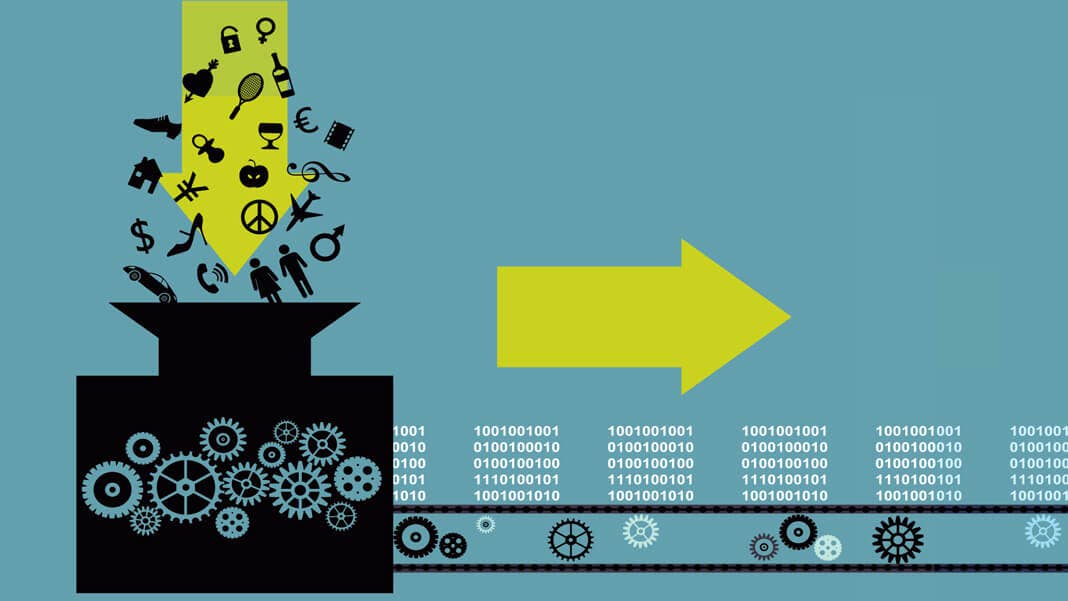Combine AI With Crowdsourcing and What Do You Get? Turbocharged Innovation

Share
A great analogy can often be the key to innovation, making it possible to transfer knowledge from one domain to another. Now researchers have shown that rather than relying on eureka moments, crowdsourcing and AI can dramatically speed up the search for these parallels.
Examples of analogies leading to major breakthroughs range from Edison’s early work in motion pictures to Kepler’s elucidation of the laws of planetary motion. But being able to strip away superficial differences and understand the underlying similarities between solutions to diverse problems has so far largely relied on individual genius.
That doesn’t need to be the case, though, according to the authors of a recent paper in PNAS. By splitting the task up and leveraging the strengths of both crowdsourcing and AI, they were able to find novel analogies that could help solve a variety of problems in creative ways.
The actual process of using analogies to solve problems is pretty well understood. The first and most fundamental step is abstracting the problem you are trying to solve to remove superficial details; the second is searching distant domains for solutions that tackle a similar problem; and the final one is applying the analogies to solve the problem at hand.
But there are a few key reasons why game-changing analogies come around so infrequently, according to the authors. Humans have a tendency to fixate on the surface details of a problem, making it hard to properly abstract the problem and look beyond domains close to those they are working in.
We also have limited bandwidth; there are only so many patents or academic papers a person can read in a day. And finally, most real-world problems are actually complex combinations of smaller problems, so solving them might require several different analogies.
To get round these problems, they split up the process into discrete steps that can each be carried out by separate groups of people or even machines. One of the main benefits of this approach is that the group searching for analogies can’t get distracted by the surface details, because the previous group abstracted them away.
The authors describe how they trained crowd-workers on Amazon’s Mechanical Turk platform to extract the purpose and mechanism from various product descriptions. These were then passed to a second group that looked for analogies before passing these analogies to a third group, who used them as inspiration to solve the original problem. The approach led to significantly more novel solutions compared to traditional design approaches, they said.
No matter how many crowd workers you throw at a problem, though, they’re going to struggle to trawl through every patent, paper, and Kickstarter idea out there, so the pool your analogies come from is still going to be small. To help scale up the approach, the authors added another stage.
Crowd workers were asked to identify distant domains of expertise that might be able to solve the abstracted problem before another group searched the new domain for ideas. One example the authors give is the problem of fitting more plugs onto a power strip, which can be abstracted to “fit objects of different sizes into a container.”
A group provided with the original problem description identified areas of expertise like computer technicians, electricians, or interior designers, but the group given the abstraction came up with much more novel professions, like contortionists, carpenters, or experts on Japanese aesthetics. The authors say these generated much more creative ideas, like placing plugs in curved lines or at different heights.
Be Part of the Future
Sign up to receive top stories about groundbreaking technologies and visionary thinkers from SingularityHub.


But an even more promising option the authors investigated was leveraging AI’s ability to churn through much more data than humans can. That’s not so easy, because AI isn’t great at looking for analogies by itself. It also tends to focus on superficial things, like shared words that don’t get to the underlying nature of what’s being described.
So the authors got crowd workers to annotate various product descriptions to highlight their purpose and mechanism. This data was then used to train a neural net to identify the purpose and mechanism of unseen product descriptions and cluster similar purposes together.
That helped identify solutions to similar problems, but using a very different mechanism. In a design task, those using the system generated roughly twice as many ideas rated as good by judges compared to those who used a standard information retrieval system or completely random selections.
To tackle more complex problems, the authors also created another AI tool that enables designers to split their design goals up into different constraints, abstract each of these to differing degrees, then use these multi-layered abstractions to search a large database of innovations for relevant matches.
Taking the example of a soap dish that can be adjusted to fit different sizes of soap bars, the system suggests ways to abstract elements of the problem. So soap becomes “personal product” and size becomes “spatial quantity,” and these terms are then used to search a database for analogies from distant domains. In this case, suggestions included a rolodex knife holder and a telescopic frame designed to fit various phones.
The authors admit they’ve only managed to scratch the surface of the many possible configurations of people and machines. The big challenge now is finding out the most efficient way for us to share the burden of innovation with machines.
Image Credit: Aleutie / Shutterstock.com
Related Articles

Your ChatGPT Habit Could Depend on Nuclear Power

AI Can Now Design Proteins and DNA. Scientists Warn We Need Biosecurity Rules Before It’s Too Late.

This Light-Powered AI Chip Is 100x Faster Than a Top Nvidia GPU
What we’re reading
